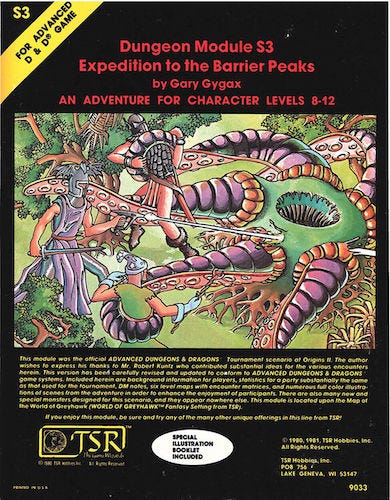This week I’ve spent some time looking at various artists’ work, used in illustrating TTRPG books. It’s a lovely thing to do, seeing all the wonderful creations, styles, and techniques all brought to conjure game scenes, characters, and locations into life.
It made me think about how art has changed in TTRPGs over the years. Back in the day, color art was reserved only for covers, and, even then, many games saved their pennies and relied on b/w cover art. Usually, throughout the 70s to 90s, it was black-line art. A simple technique that, when done expertly, can convey an NPC’s character or highlight the menace of a monster. A lot of the time - let’s be honest - it wasn’t always so well done, and seemed more perfunctory and based on cost savings.
As the years passed, in general, TTRPG art has become an amazing source of inspiration for game masters and players. These days, there are highly detailed grey-scaled pictures or else full-color works bringing games to life. Indeed, and especially with Virtual Table Tops (VTTs), art has become a vital component of many games, used by GMs to show their players what they face or to simply show where their characters are standing on a floor plan.
I remember when GMs didn’t show players art. It just wasn’t really done. TTRPG books were not set up for it, and there was no such thing as PDFs or jpegs to share or copy images from. I think the first time I saw images being used as a play aid was when I picked up the 1980 AD&D module S3: Expedition to the Barrier Peaks, which included a separate booklet containing illustrations to be shown to the players during the game—including four color paintings. Wow! Others followed suit, but I don’t think it was until recent years that the concept of art as play aids has really become foundational to many tabletop games. That’s not to say all, as many can operate just as well in the “Theatre of the Mind.” Indeed, I personally have no issues not seeing any art when I’m a player, my imagination is just fine at illustrating otherwordly and terrifying monsters—perhaps more effectively than art ever can when dealing with the likes of Cthulhu : )
But, sometimes, it is nice to be able to see the NPC’s illustration. It helps cement them in my mind and differentiate them from the other NPCs.
Many folks will tell you that art sells games. And that’s true, more or less. A good-looking game, nicely laid out, tends to stand out. But it’s an ephemeral thing. While the art will always impress, it’s what’s written inside that will make you play it, inspire you to gather your friends and run it, and set up the scenes for those encounters, challenges, and experiences that you’ll remember for long after the memory of the art fades.
So, what makes a good TTRPG book? Great art. Great writing. And every game designer I know strives to constantly improve both. Quality never stands still.
So, if you want to be impressed, want some inspiration, or just want something to kill some time, check out some online art portfolios. There’s plenty to see from Artfinder.com to DeviantArt.com or Pinterest - there’s lots more. Artists fashion the miraculous out of bytes, paint, and pencils. Celebrate them.





Have you seen Eye of the Beholder? Film about D&D art. I'm pretty sure we discussed it a while back. Reading through the old AD&D books recently I was struck by the influence the art had in communicating the feel of the game.